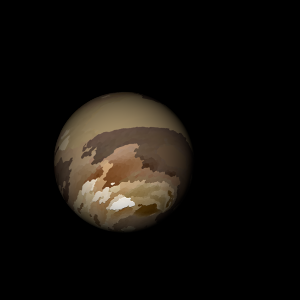|
|
Space Astro
|
Info for exoplanet "Thel Puck"
| Scientific (actual) data |
|---|
| Name | Kepler-324 c |
| Planet status | Confirmed |
| Radius | 0.281 |
| Orbital period | 51.8056 |
| Semi major axis | 0.26 |
| Discovered | 2014 |
| Updated | 2021-02-05 |
| Tconj | 2455020 |
| Impact parameter | 0.83 |
| Publication | Announced on a website |
| Detection type | Primary Transit |
| Alternate names | 2MASS J19055315+4938564 c, K01831.01, KIC 11601584 c, KOI-1831 c, KOI-1831.01, WISE J190553.14+493856.6 c |
| Star name | Kepler-324 |
| Right ascension | 286.47° |
| Declination | 49.65° |
| Mag j | 12.783 |
| Mag h | 12.337 |
| Mag k | 12.291 |
| Star distance | 508.94 |
| Star metallicity | -0.009 |
| Star mass | 0.86 |
| Star radius | 0.84 |
| Star temperature | 5194 |
| Star alternate names | 2MASS J19055315+4938564, KIC 11601584, KOI-1831, WISE J190553.14+493856.6 |
| Wikipedia article | Kepler-324 c |
Back
| |
| Fictional info (?) |
|---|
| Suggested name | Thel Puck |
| Planet type | Cold planet |
| The polar regions are constantly below 189°K (-84°C).
A prominent result is the "great yellow spot", a giant storm that is known to have existed for centuries since it was first detected by scanner. |
| Atmosphere | Methane | 53% |
| Carbon dioxide | 45% |
| Ammonia | 0.67% |
| Hydrogen | 0.56% |
| 2H2O | 0.002% |
| Atmospheric pressure | 0.22 bar |
 |
| No known satellites |
| Google search for Thel puck |
|
Website by Joachim Michaelis
|
|
|
|